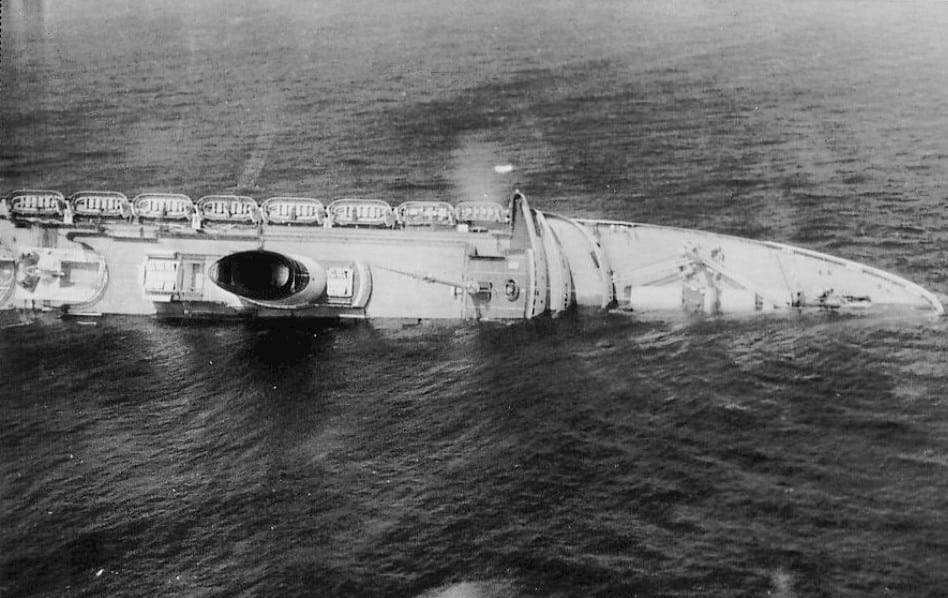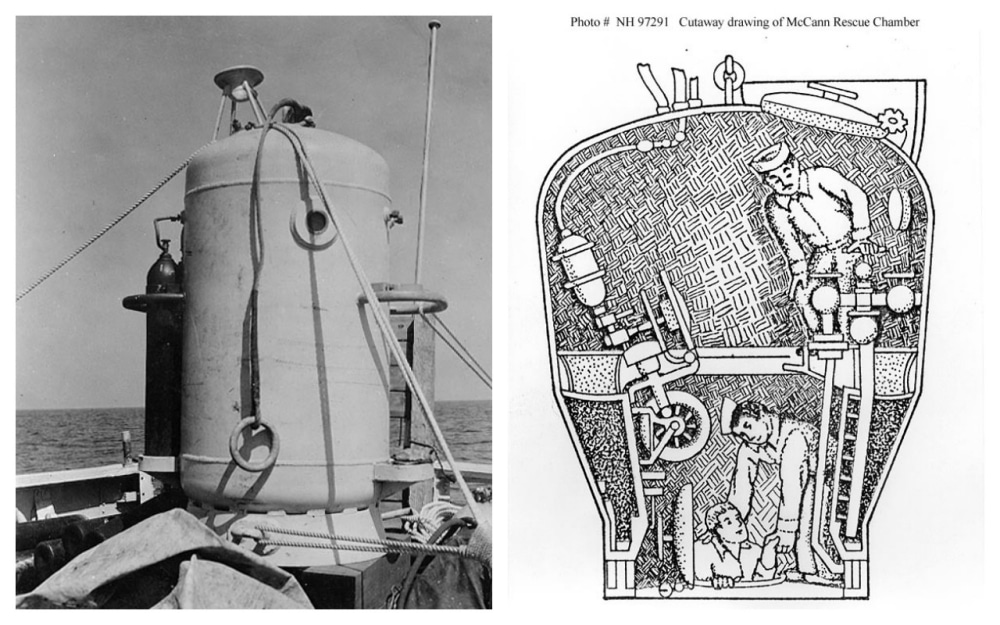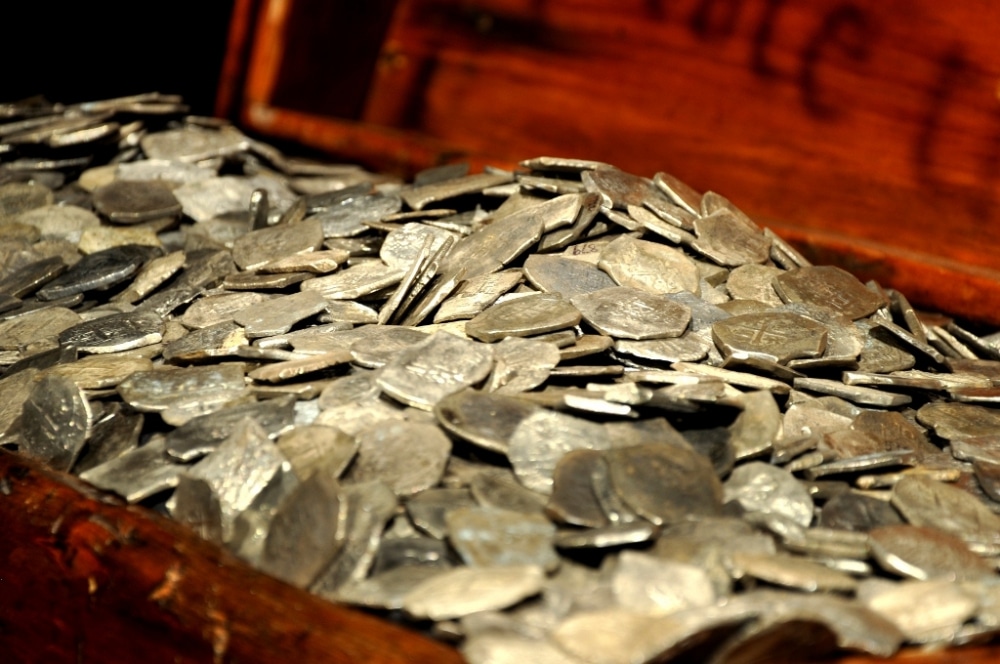5 Famous Shipwrecks in New England
From luxury liners to pirate ships, some of the most famous shipwrecks in history have happened right here in New England.

Coffee By Design | Portland, Maine
Photo Credit : Katherine KeenanNew England was built along the sea — and in many respects, it was built by the sea. We marvel at its beauty and partake of its bounty, and many have become wealthy navigating its waters. But life on the sea is fraught with danger, too. Hundreds of ships and many lives have been lost off the New England coast. Here are a few of the region’s most famous shipwrecks.
Famous Shipwrecks in New England
S.S. Andrea Doria: New England’s Titanic
The 697-foot Andrea Doria was a superstar ship of the 1950s. Decked out in luxurious furnishings and sporting an unprecedented three outdoor swimming pools (one for each passenger class), it was a premier luxury liner of its day. Launched in 1953, the ship had completed 100 transatlantic voyages by July 25, 1956, when human error set it on a collision course with the icebreaker bow of the Stockholm off the coast of Nantucket, Massachusetts. The impact left the Andrea Doria taking on water and listing so sharply to the side that half of its lifeboats were inaccessible. Other ships in the vicinity responded quickly and were able to rescue all but 46 of the approximately 1,700 people on board (five people aboard the Stockholm were also killed). Just after 10 o’clock the next morning, the giant ship disappeared into the sea.
The Andrea Doria now sits in 240 feet of water and has become a popular, if perilous, diving destination. Since it settled to the ocean floor, the ship has claimed the lives of at least 16 divers. In a 1984 TV event, the safe used by first-class passengers yielded not the multimillion-dollar haul of valuables that some had predicted, but rather a small cache of mostly paper currency.

Photo Credit : U.S. Navy Historical Center via Wikimedia Commons
U.S.S. Squalus: The Greatest Submarine Rescue of All Time
When the Navy submarine U.S.S. Squalus disappeared beneath the waves off the New Hampshire coast on the morning of May 23, 1939, all was going well. The submarine had already successfully navigated 18 test missions, and the 59 men aboard saw no signs that the 19th would be any different. Four miles beyond the Isles of Shoals, the Squalus had descended to a depth of about 60 feet when water started flooding through the main air induction valve. By the time the crew was able to close the valve and seal off the flooded portions of the sub, 24 men were lost. The Squalus had taken on too much weight, and it slowly descended to the ocean floor.
In the short history of the U.S. Navy submarine fleet, no rescue attempt in water deeper than 20 feet had ever succeeded. The Squalus was resting at a depth of 240 feet. With the clock ticking, the Navy deployed for the first time a type of diving bell called a McCann rescue chamber. Ten feet high and seven feet wide, the two-chambered vessel could be attached to the sub with a rubber seal and take on passengers. The process was slow, but over the course of several hours the diving bell made three successful trips. On its fourth and final ascent, however, the diving bell’s guide wire failed and it had to be lowered to the ocean floor while repairs were made. Two divers were nearly lost in the process, but after four terrifying hours the diving bell was reconnected and the final survivors were pulled up.
Unlike the other famous shipwrecks on this list, the Squalus would sail again. The submarine was raised on September 13, 1939. Repaired and recommissioned as the Sailfish, it went on to sink seven ships during World War II. The sub’s conning tower is on permanent display at the Portsmouth Naval Shipyard.

Photo Credit : Theodore Scott via Wikimedia Commons
Whydah: A Relic of the Pirate Era
The 110-foot Whydah was commissioned by a London slave merchant in 1715. On its maiden voyage in 1716, the three-masted galley ship sailed first to Africa and then to the Caribbean, trading both goods and humans along the way. In February 1717, loaded up for its return to England, the Whydah was captured near Cuba by “Black Sam” Bellamy, who made it the flagship of his pirate fleet. Bellamy sailed the Whydah up the colonial American coast, capturing ships as he went. On April 26, 1717, the Whydah was caught in a violent storm and slammed stern-first into a sandbar about 500 feet from the shore of what is today Wellfleet, Massachusetts. Although they were within sight of land, only two of the Whydah’s crew survived. At the time of the crash, the ship was rumored to be carrying the accumulated treasure of more than 50 looted vessels.
The Whydah and its treasure eluded discovery until 1984, when the wreck was located submerged under 14 feet of water and buried in about five feet of sand. In the years since, more than 200,000 artifacts have been recovered from the wreckage. A museum dedicated to the Whydah, the only fully authenticated Golden Age pirate shipwreck ever discovered and one of New England’s most famous shipwrecks, opened in 2016.
Learn more: Barry Clifford and the Whydah Discovery | Brief History of a Cape Cod Pirate Ship

Steamship Portland: New England’s Most Deadly Shipwreck
The side-wheel paddle steamer Portland had provided passenger service between Boston and Portland for nearly a decade following its construction in 1889. It was a sturdy and dependable ship, among the largest and most luxurious in New England at the time. But it proved no match for the wind and waves of the Portland Gale of 1898 (to which it would ultimately lend its name). As the massive blizzard struck on the evening of November 27, 1898, the Portland capsized and sank in the waters off Cape Ann. Since the only known passenger list went down with the ship, no one is certain how many people were on board. There may have been as many as 250, although only 51 bodies were ever recovered. The exact location of the wreckage remained unknown until 1989. In 2008, the first divers reached the wreckage, located 460 feet deep within the federally protected waters of the Stellwagen Bank National Marine Sanctuary. As with a number of other famous shipwrecks, the Portland has been named to the National Register of Historic Places.
Andrea Gail: The Tragedy of the Perfect Storm
Of all New England’s famous shipwrecks, the private fishing boat Andrea Gail has become perhaps the best known, thanks to Sebastian Junger’s best-selling book The Perfect Storm and the movie of the same name. It departed from Gloucester, Massachusetts, on September 20, 1991, bound for Newfoundland fishing grounds. But when the fishing there proved poor, the 72-foot boat and its six-person crew headed east toward a shallow area known as the Flemish Cap. Concerned that a faltering ice machine would cause the catch to spoil, the captain set course for home on October 26, despite forecasts of ominous weather ahead as Hurricane Grace moved north toward a low-pressure system pushing south from Canada. At about 6 p.m. on October 28, the Andrea Gail contacted sister ship the Hannah Boden (captained by Linda Greenlaw), stating that it was about 160 miles east of Nova Scotia’s Sable Island and experiencing 30-foot waves and 90 mph winds. When the Andrea Gail failed to return to port on October 30, a search that would eventually cover 186,000 square miles was launched. On November 6, the boat’s emergency beacon washed ashore on Sable Island. A smattering of other wreckage was found, but the ship and its crew remain lost at sea.
Do you know stories of famous shipwrecks in New England?
This post was first published in 2018 and has been updated.








Somewhere I read (“Collision Course”?} that a woman aboard one the the ships flushed a toilet at the time of impact. Thinking that this caused the accident she ran from her room shouting, “I DIDN’T MEAN TO DO IT!”
In January, 1949, my wife Salme (then 9 years old) immigrated to the U.S. from Finland aboard M.V. Stockholm. It was a rough, winter crossing where most everybody got seasick. She helped out by manning the ‘bucket brigade’.
I remember when the Andrea Doria accident happened. I was 12 yrs. old at the time, but I never realized that it was human error that caused this. So very sad!
We had just gotten our first TV set and one of the first things we watched was the sinking of the Andrea Doria. I was 9yrs old and it fostered a lifelong love of nautical history and shipwrecks. Our family was living on Hampton Beach & a friend of my father who worked at Portsmouth Naval Shipyard, gave him a cribbage board made from metal that came from the Squalus. I’m now 72 and still have the board and my love of all things nautical.
I think while looking at a google satellite photo I may have found the bow of a large sunken ship off the coast of NH .
Im a scuba diver and it really is very interesting reading this very interesting boat story s sad but interesting and I would really like too go on a dive trip some day myself
I’m a new metal detector, any suggestions on Connecticut beaches to explore? I’m new here from the West Coast.
Actresses Ruth Roman (Farley Granger’s girlfriend in Strangers on a Train) and Betsy Drake who was married to Cary Grant and starred with him in Room for One More survived the sinking of the Andrea Doria as did the mayor of Philadelphia and Mike Stoller of the songwriting team Leiber and Stoller. ABC Radio News reporter Edward Morgan covered the story and never mentioned that his daughter had been on the ship and was believed to have died. She had not; she’d been thrown on the deck of the Stockholm in the collision. Morgan found out that his daughter survived the next day.
We should also remember the USS Thresher disaster on April 10, 1963.
Absolutely. And there is a reservoir in New Britain/Southington, CT named after a sailor that was lost on the Thresher. The David Wassel Reservoir.
The story of the Favorite out of Wiscasset ME, which sank off of Gloucester in a severe blizzard was made famous by Longfellow’s poem “The Wreck of the Hesperus”. Some twenty ships were lost that day.
Maureen C…. I was 8 years old when the Stockholm collided with the Andrea Doria off Nantucket. This was the first major news story I remember from my childhood.
The Pendleton off Chatham